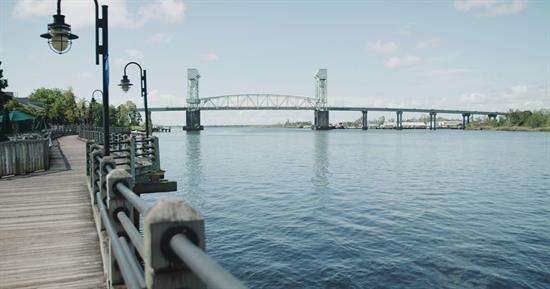Press Releases
Rouzer Statement from Hearing on the Clean Water Act at Fifty
Washington,
September 20, 2022
WASHINGTON, D.C. - Opening remarks, as prepared, of Subcommittee on Water Resources and Environment Ranking Member David Rouzer (R-NC) from today’s hearing entitled, "The Clean Water Act at Fifty: Highlights and Lessons Learned from a Half Century of Transformative Legislation": Thank you, Chair Napolitano. I appreciate your holding this hearing, and I would also like to thank our witnesses for being with us today to discuss the Clean Water Act. In 1972, Congress passed the Clean Water Act in an overwhelmingly bipartisan fashion. Members on both sides of the aisle recognized we had a major problem with water quality in our nation’s waters and understood the many benefits that we derive from access to clean, navigable waters. In North Carolina's Seventh Congressional District, which I'm honored to represent, in fact is known for beautiful waterways and beaches that provide significant recreational and economic benefits. We also have many important water bodies that we rely on for commerce and drinking water. The Clean Water Act has had great success in its 50 years protecting these waters in North Carolina and all around the country. However, we’ve yet to reach the ambitious goal Congress set out in 1972 to make all waters in the United States “swimmable and fishable”. We must recognize that to move forward in achieving this goal, it is vital for Congress and the federal government to modernize and update the Clean Water Act in a way that is fair and reasonable to all, including the regulated community, which is so integral to our economy as well as our food and fiber production. Communities and stakeholders have faced years of regulatory and legal uncertainty in complying with the Act. These challenges include overreach by some states when using their section 401 authority under the Clean Water Act to certify that a project meets water quality standards. Some States have used this authority to block meaningful infrastructure projects they are politically opposed to for reasons well beyond Clean Water Act goals and water quality. There’s also no greater example of overreach under the Clean Water Act than with the regulatory nightmare of complying with and understanding the definition of a “water of the United States” or “WOTUS”. This “WOTUS” definition is used for determining who must obtain a section 404 Clean Water Act permit, which is well known for being a costly and time-consuming process. The WOTUS question has been debated for decades in Court, and the EPA under varying presidential administrations has issued regulatory definitions of WOTUS that are quite expansive, which was most definitely the case with the 2015 Obama EPA WOTUS Rule. I am very concerned that this Administration plans to issue a similar rule that would once again place unnecessary burdens on the communities, farmers, businesses, and industries who also rely on clean water. This year the Supreme Court announced it would be taking up a case on the definition of WOTUS, which further shows the enormous impacts these rulemakings have on citizens across the country. I’ve joined the Ranking Member of the Full Committee and several other of my Republican colleagues to express our concerns about the Biden Administration’s actions on their proposed rules and to urge the Administration to consider the pending Supreme Court’s ruling. I’m looking forward to discussing these important issues with our panel today and learning how we can work together to make the Clean Water Act more effective over the next 50 years. Madam Chair, this morning, Ranking Member Graves, myself, and several other ranking members of House committees sent a letter to the EPA and the Corps on WOTUS, which we all know is an issue of importance to the Clean Water Act. I ask unanimous consent to enter this letter into the record. Again, thank you to our witnesses and I look forward to our discussion. I yield back. Click here for more information, including live video and witness testimony. |


